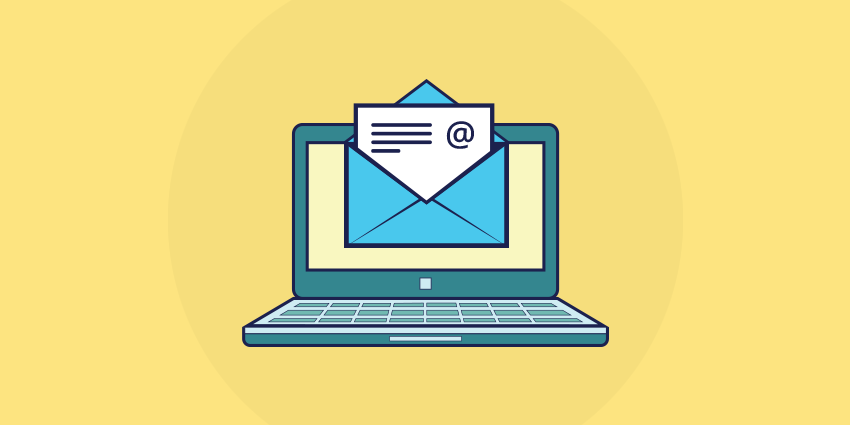We’re all familiar with email marketing. It’s how we get our coupons, discounts, and newsletters from businesses all over the internet. Many of these emails are considered spam. So how do small companies without a big marketing budget do email marketing correctly to engage their audience and drive more people to their websites or into their stores?
We’ll answer the question with a proven strategy using sales and marketing automation. Here’s why you should consider creating an email strategy for your small business:
Half of the world’s population are email users. Estimates show around 3.8 billion email users by the end of 2018. Gmail users alone account for 1 billion email accounts, 75% of whom access them through their mobile devices. In fact, every mobile user has at least one email account for signing up on Google Play or accessing their social media account through Facebook Mobile or Twitter. One in two of your potential clients and customers are email users (give or take, depending on where you live), and by being able to connect with them, you could potentially increase your income by as much as 50%.
Stay on top of user engagement. Besides email, the internet has plenty of other platforms for connecting with other people around the world. But despite the popularity of social media, email still ranks as the best and the most preferred method of communication, particularly on anything business-related. One of the key advantages of having an email list is that, unlike Facebook or Twitter, you have more control over how your message is delivered to your target audience. You could spend hours creating great content for them, but it could quickly vanish from Facebook newsfeed or buried underneath by dozens of other posts within minutes.
Automate routine tasks more easily. Small business owners don’t have much time on their hands responding to every email. Fact is, they don’t have to. Some of the best sales and marketing automation have mailing lists, email templates, and auto-responders taking care of most of the work so they can focus more on things that matter. It might take some work initially getting more acquainted with the ins and outs and creating an email strategy. As you gain more experience, you’ll be spending less time with it, and begin to reap the benefits of using this sales and marketing feature for your small business.
Steps in Building your Email List Using Sales and Marketing Automation
Step 1:
Choose a sales and marketing automtion software with an auto-responder feature. If you’re just starting out with email marketing, you don’t need an expensive CRM like Salesforce, Hupspot, or NetSuite. There are plenty of options for business owners from email subscription service and lead-generation software. Small Business Dream offers service packages for small businesses who want to accelerate growth using this feature. Just remember to stay within the bounds on the proper use of this tool.
Step 2:
Set up an opt-in page or survey form. You can start with a very simple and straightforward landing page or survey form and add your bells and whistles as you get better. Small Business Dream can help you set up your first landing page and survey form. Share the link through your Facebook Page, WordPress, or your company website. Or you can have it the old way and add the contact yourself (be sure to get their email addresses). Another method is to put QR codes in conspicuous places to get your walk-in prospects and customers to your landing page or online survey. Offer freebies or discounts for taking the time.
Step 3:
Wait for confirmation from your subscribers. Double opt-ins is the preferred method of choice for email subscriptions because it accomplishes two things at once. First, it filters out low-quality leads, and second, it helps verify real users. This might seem tedious compared to single opt-ins, but you’ll have better chances of making more conversions over the long haul for getting high-quality leads. It consists of a few lines asking your recipients to confirm they’ve opted in to your mailing list by clicking a link, etc., hence a “double” opt-in.
Step 4:
Segment your prospects and customers. You may start with just a few categories at first. Later, you can add more details to your customer data to make it more granular. Small Business Dream allows you to segment your prospects and customers from your initial survey. For instance, you can include a list of brands, companies, or products on the survey form and Small Business Dream will categorize each contact based on which box your visitors have checked. The same applies for setting priority to every customer. You can update their category by giving out surveys periodically in order to stay relevant to them.
Step 5:
Create a simple email follow-up series. Take some time reading through the templates to see how each customer engagement progress seamlessly to the next, and so on. It usually takes some practice and experimenting to make sure it won’t sound robotic. As much as possible, we want to avoid the impression that they’re dealing with a robot secretary instead of a real person, by a adding a human touch to every conversation.
Conclusion
Having a mailing list for your small business is more of a necessity these days, now that our target audience is moving towards mobile. Take some time learning the ropes and start making your own email strategy.
Learn more on how you can successfully build your business through sales and marketing automation. Visit SmallBizDream.com and start using our suite of tools to increase your sales and profitability like never before.

